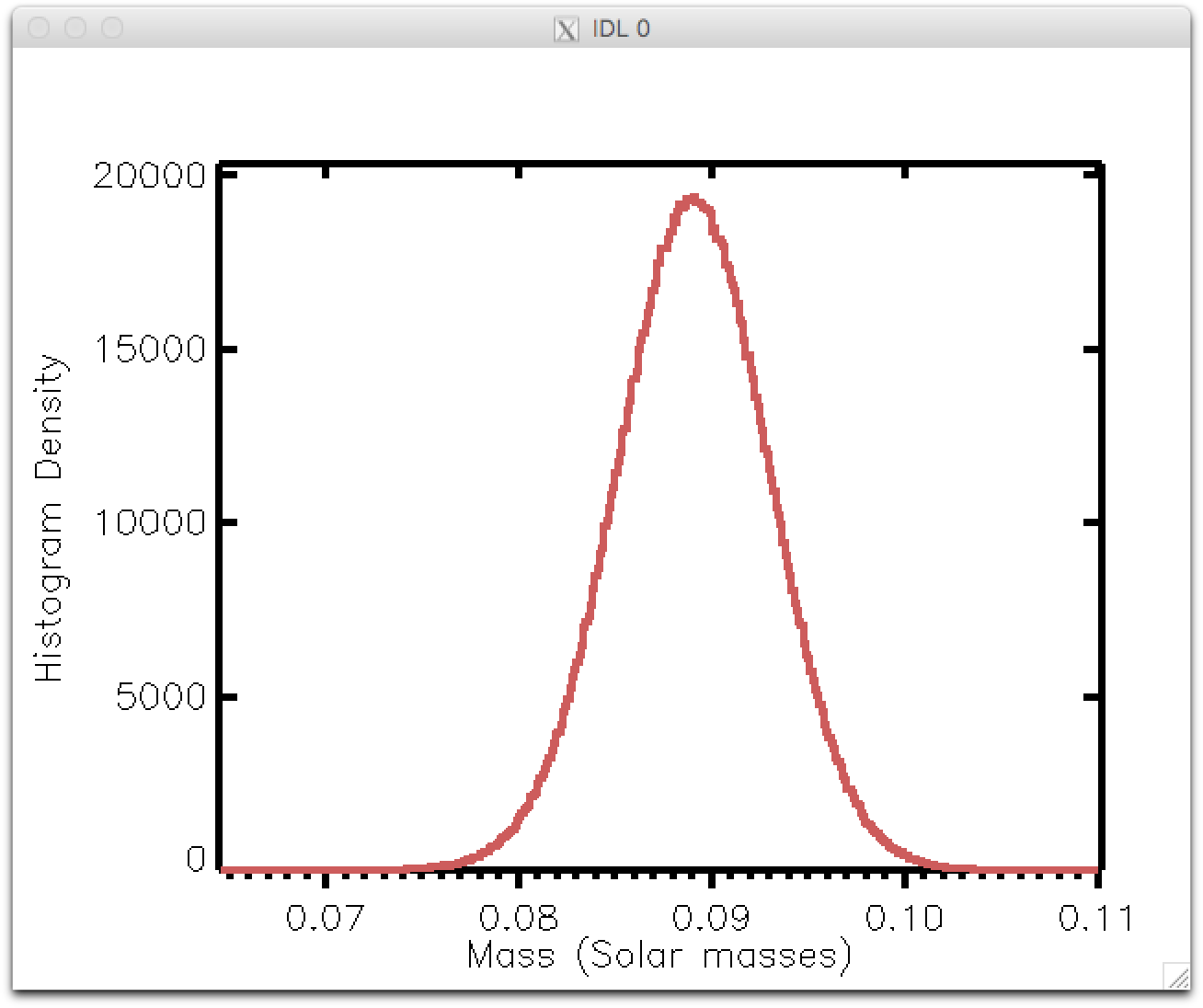This code is meant to provide realistic masses and uncertainties of (single) low-mass stars given a user-provided 2MASS Ks and distance (and uncertainties).
The code will read in the included posterior from this paper to estimate the error arising from scatter in the relation itself. The output is a posterior on stellar mass (Solar units). You can also request 1D (mean and sigma) errors if those are preferred.
You can include [Fe/H] if it is known. In this scenario the code will use a Mk-Mass-[Fe/H] relation. Note that the [Fe/H] term is technically not statistically significant. So this is mostly for illustrative purposes. However, there are good reasons to think that metallicity starts to matter in more extreme situations (see Section 7.5 of https://arxiv.org/abs/1810.07702).
The code requires scalar values for K, distance, and corresponding uncertainties. If you instead of a set of values (e.g., an asymmetric or otherwise non-Gaussian posterior on distance) the suggested solution is to read in the posterior and run the code on each point separately, and then combine the resulting posteriors on mass.
Restrict use to stars with 4<MK<11 (and probably 4.5<MK<10.5), on the main-sequence, and -0.6<[Fe/H]<0.4. This is roughly 0.075Msun to 0.7Msun. The code will output a warning if you are outside the former range. There’s some evidence that the fit has issues with very active stars, based on a comparison to predictions from low-mass eclipsing binaries (a ~2% systematic offset). Use with caution on such systems until we have the chance to explore this issue with a larger set of data (in progress).
If you use this code, please cite Mann et al. 2019 ApJ 871 63.
You can also download the input data used to derive this relation (orbits, distances, masses, etc.) from the ancillary folder on arXiv or in the full version from IOP.
The code is available in IDL, Python 2, and python 3.
To install the python version:
git clone https://github.com/awmann/M_-M_K-
cd M_-M_K-/
python setup.py build
python setup.py install
To run the IDL code you should update the ‘path_to_posteriors’ variable to match your relevant path. Otherwise it should run with minimal dependencies (just Coyote and similar common astronomy libraries).
How to run:
Maybe you want to know the mass of GJ1214 (python syntax):
import numpy as np
from mk_mass import posterior
k,ek = 8.782,0.02
dist = 14.55
edist = 0.13
feh,efeh=0.3,0.1
mass = posterior(k,dist,ek,edist)
mass_feh = posterior(k,dist,ek,edist,feh,efeh)
print ("Mass=%6.4f+/-%6.4f" % (np.median(mass),np.std(mass)))
Mass=0.1803+/-0.0047
Let's say you want to know the mass of Trappist-1 (IDL syntax):
k = 10.296
ek = 0.023
dist = 1000d0/80.4512 ;; Gaia DR2 parallax
edist = (0.1211/80.4512)*dist
mass = mk_mass(k,dist,ek,edist)
print,'The mass of Trappist-1 is '+String(median(mass),format="(D6.4)")+'+/-'+string(stdev(mass),format="(D6.4)")+' M_sun, a '+strtrim(string(100.*stdev(mass)/median(mass),format="(D5.1)"),2)+'% error'
cghistoplot,mass,/outline,thick=4,xtitle='Mass (Solar masses)'
"The mass of Trappist-1 is 0.0898+/-0.0023 M_sun, a 2.6% error"
The success of the associated paper depends on the ease of use of this software, so please feel free to send questions/suggestions to mann.andrew.w [at] gmail.com (or open an issue).
To do:
-make the fast mode a little faster by switching errors to derivatives from MC.
-add activity fit options (analysis in progress).
-Add radius calculations from 2015 paper (need to solve for covariance terms first).
